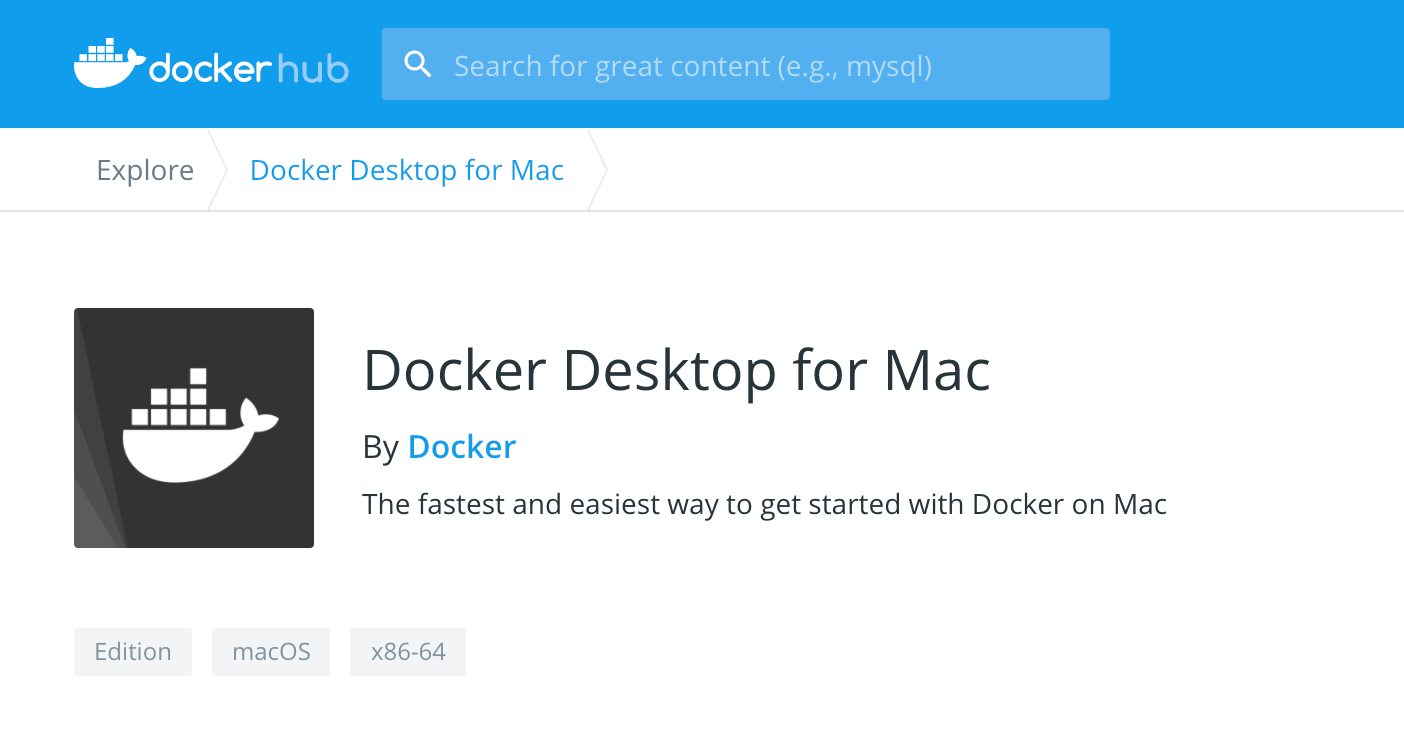

- #Docker for mac compose for free
- #Docker for mac compose install
- #Docker for mac compose update
- #Docker for mac compose software
When forwarding apps from Docker to XQuartz you may find that they do not run correctly or have unexpected lag. X11 forwarding from Docker to Linux is fast and can be accelerated by sharing additional resources such as /dev/video0 or /dev/shm, unfortunately this is not possible with Docker on macOS. Here's an example with a docker-compose.yml file for convenience: version: "2.0" If you want an app such as Slack to use a HTTP_PROXY then you can pass in the environmental variable at runtime.
#Docker for mac compose install
Install and run socat to create a tunnel from an open X11 port (6000) through to the local UNIX socket where XQuartz is listening for connections: $ socat TCP-LISTEN:6000,reuseaddr,fork UNIX-CLIENT:\"$DISPLAY\" This means Docker won't be able to access it. Set up XQuartz for network connectionsīy default XQuartz will listen on a UNIX socket, which is private and only exists on local our filesystem. Most packages are available in package repositories or PPAs so apt-get could be used, but Slack is an exception to the rule. Run this before building the Dockerfile or move it back into the file itself as a RUN step: $ wget If you need to fetch the binary from a specific HTTP proxy or VPN tunnel then you may not want Docker to handle that. You may also be asking yourself why I've added slack from the local filesystem instead of using wget or curl.

It appeared to be broken when I tried it so I've added some more packages to fix the runtimes errors I encountered. I adapted this Dockerfile from one that Jess Frazelle came up with. & /usr/sbin/update-locale LANG=en_US.UTF-8 RUN echo "en_US.UTF-8 UTF-8" > /etc/locale.gen \
#Docker for mac compose update
RUN apt-get update & apt-get install -y \ Once you have XQuartz set up you can then install your favourite graphical Linux apps into a Debian container or whichever distribution you prefer.

=> Creating Caskroom at /usr/local/Caskroom => brew cask install Caskroom/cask/xquartz It's packaged up as the XQuartz project and can be installed with brew: $ brew install Caskroom/cask/xquartz Install an X11 serverĪn X11 server exists for MacOS which allows applications like XTerm to run and display output on your local computer. Here's what you need to do to bring X11 to your Desktop.

Slack for Linux running on the Mac Desktop in El Captain Step-by-step
#Docker for mac compose for free
So why pay for something you can do for free with Docker? By using your own hosted proxy server or VPN you can protect some or all of your traffic. This is ideal if you frequently work on public WiFi networks or behind a restrictive corporate network. Several paid tools exist for macOS to isolate network traffic and push it down different HTTP proxies or SOCKS tunnels depending on custom rulesets. Since Docker provides a sandboxed environment for applications that means you can add/remove just the capabilities you want and tighten up on security. or to isolate and/or spy on network traffic.To use tools which may not be ported to macOS yet.
#Docker for mac compose software
To test various versions of the same software simultaneously.To access to newer versions of software.Here are a few reasons why you may want to use Docker to run Linux applications on macOS: So why would you want to run Linux versions of apps on your Mac? In some cases they have been ported and re-built natively and even optimized to take advantage of the OS. Many applications that exist for Linux also exist for Mac: Chrome, FireFox, VLC Player, Slack, Arduino IDE etc. If you are running an XWindows server (which you probably are) then getting a graphical application to appear on your screen from a remote Linux system or a Docker container can be as simple as setting the DISPLAY environmental variable. Package managers like apt-get, yum and pacman make installing new software almost seamless. If you use Linux as your host operating system then with one or two commands you can have most graphical Linux applications up and running on your desktop in seconds.


 0 kommentar(er)
0 kommentar(er)
